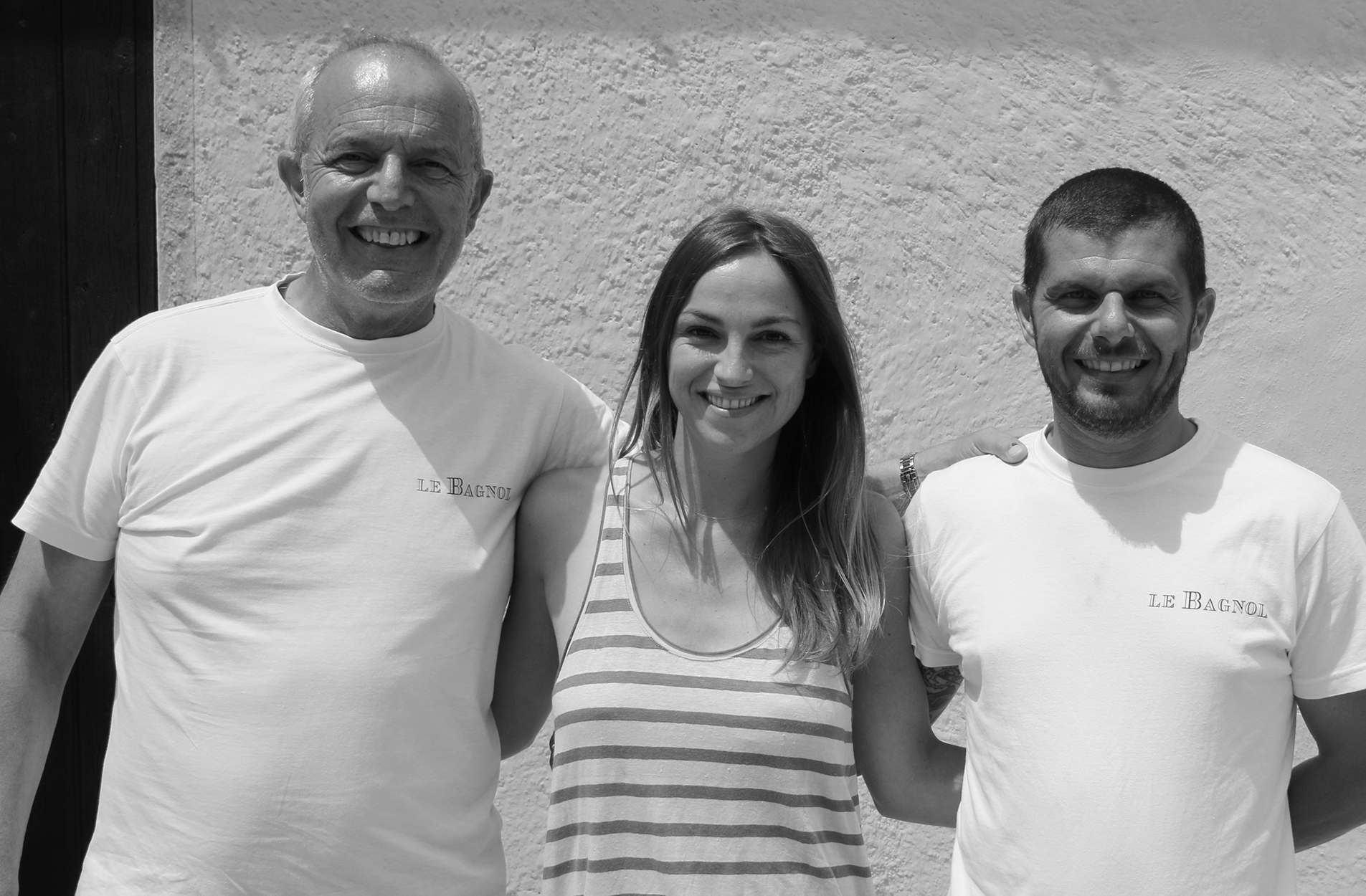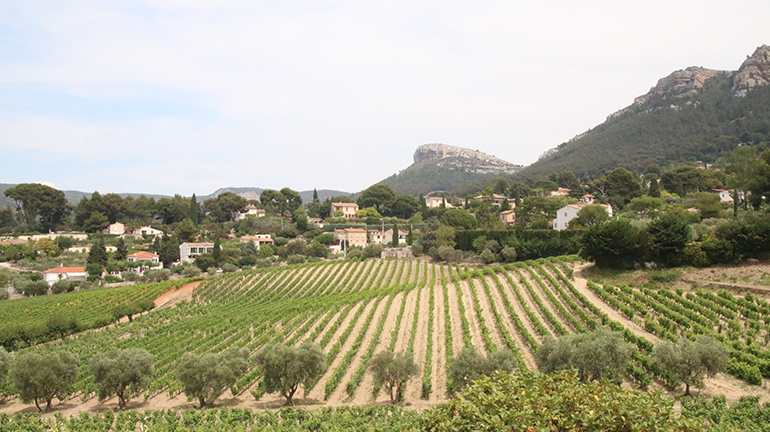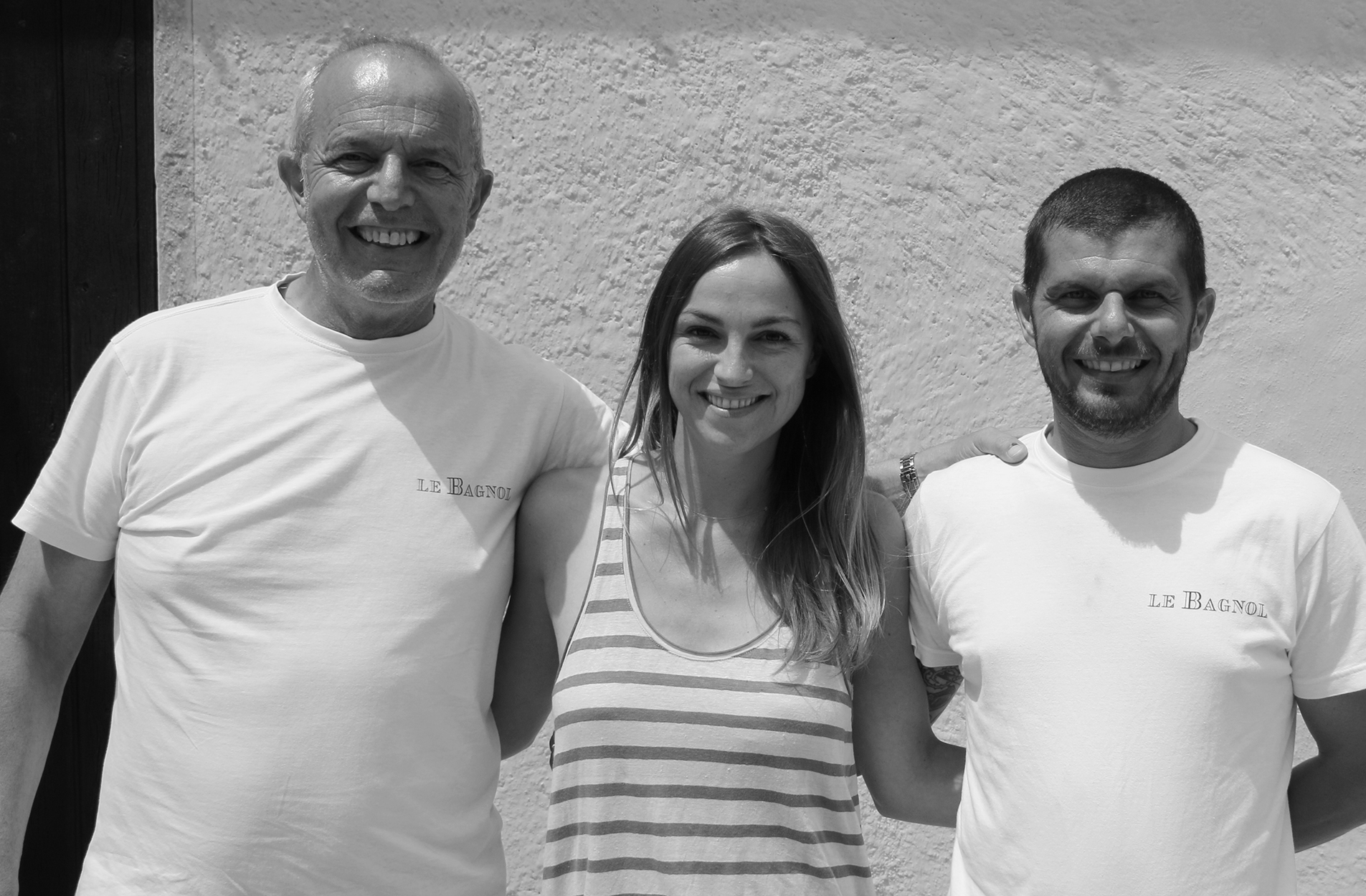
Situated in the southeastern region of France on the Mediterranean coast about 12.4 miles, or 20 kilometers east of Marseille, Cassis is more readily known as a popular tourist destination, famous for its cliffs (falaises) and the sheltered inlets called calangues. But for those in the know, Cassis is also a fantastic small wine producing area in Provence.
The AOC was created in May 1936, the title covers the red, white and rosé wines produced from about 495 acres of land in the coastal village of the same name, and not to be confused with being the producer of the sweet blackcurrant liqueur Creme de Cassis, which is a specialty of Burgundy, and is so called because it is made from blackcurrants, also called cassis.

History
Wine growing was introduced to Cassis – as it was elsewhere in Provence – by the Greeks. To be exact, the site where Cassis now sits was first occupied between 500 and 600 BC by the Ligures, who constructed a fortified habitation at the top of the Baou Redon. These people lived by fishing, hunting, and farming.
During the Roman times, Cassis was part of the maritime route made by the Emperor Antoninus Pius. The port then advanced right up to Baragnon, and was a small village, established mainly around the Arena and Corton beaches. The principal livelihood was fishing and maritime trade with North Africa and the Middle East.
By the mid-19th century, a thriving viticulture had developed specializing in vin doux, or dessert wine, produced with the Muscat grapes which had been introduced to Provence by Good King Rene in the 15th century.
Then disaster struck in the form of the phylloxera epidemic of 1865, which devastated vineyards all across Europe. Winemaking was built up again painstakingly from scratch, using grafted stock from the United States.
Even so, vineyards today cover only about 543 acres, as opposed to 1,235 acres before the epidemic.
But the new version of Cassis wine was quite different from the original one. Instead of Muscat grapes, winemakers drew on a range of other varieties, including Clairette, Marsanne, Ugni blanc, and Sauvignon blanc.
By some accounts, this was because the Muscat grapes were incompatible with the imported graft stock. Whatever the reason, the fresh, dry, wines produced in Cassis today team particularly well with the fish, and also the seafood that dominate its cuisine.
Climate and Terroir
With sunshine found in abundance in Cassis, mild winters are followed by very warm summers with little rainfall. Average temperatures can range from 79/F degrees in July, to 45/F degrees in January, and September traditionally being the wettest month of the year.
Throughout Provence, a series of low coastal mountain ranges and ridges creates varied mesoclimates. The warmest are those directly next to the Mediterranean, which also provides a warming, moderating effect.

That said, the overall landscape around Cassis is pure Provence; white, scrubby, garrigue-strewn cliffs overlook the vineyards below, which lead right down to the clear blue waters of the bay. Garrigue (herb-strewn scrubland based on dry limestone soils) was described by Baron Le Roy de Boiseaumarie (the godfather of the appellation system), as the ideal vine-growing terroir. And make no mistake about it, limestone is primarily the main soil of Cassis, which is why the area is particularly suited to the cultivation of Clairette, Marsanne, Ugni blanc, and Sauvignon blanc, the major grape varieties of the area.
To sum up, Cassis possesses wines with wonderful elegance and intense aromas of citrus, peach, honey and dried herbs. Many say you can even taste the salt of the nearby sea. However, a fair amount of these wines never leave the region, because they have been all but consumed by the local population. Yes, they are that good.
----
Le Domaine du Bagnol
The Domaine is owned by Jean-Louis Genovesi, a native of Cassis who had moved to Paris for business but returned later in life and purchased the estate. Jean-Louis and his son, Sébastien, have focused on their efforts on making wines that represent the terroir of the region. The domaine sits just beneath the limestone outcropping of Cap Canaille and is 200 meters from the shores of the Mediterranean.
Interview with Sébastien Genovesi, winemaker at Le Domaine du Bagnol

Grape Collective: Tell us about the history of wine in Cassis.
Sébastien Genovesi: The history of the wine in Cassis. You first have to know the viticulture of Cassis is very old. They have found traces of clay vessels that are 2,500 years old.
These are wine artifacts from Phoceans people and old people living in the area of Marseilles - they were traders (they probably brought the grape varietals from Persia).
The vineyards started to develop in Cassis. In the summer Cassis was a fishing village and the fishermen worked in the sea and in the winter the fishermen returned to the earth. And that is how the village was created.
The appellation of Cassis was created in 1936. It was created to put the brakes on - prevent the proliferation of cement factories so that they could preserve vineyards and have more vines than houses.
At that time the viticulture in Cassis represented 500 hectares of vines. Today it has gone down to 320, but in the last 10 years we have gone from 290 to 320, so we are starting to reacquire the same philosophy of developing the terroir of Cassis.
Cassis has three types of terroir. There are three zones. The first zone is in the Cap Canaille which is clay and limestone. The second zone is Les Jannots, the bottom of a valley. The third zone is the zone closest to Marseille - prehistoric soil that used to be submerged - a lake so you get marl - a sandy alluvial soil with fossils.

What is the philosophy of winemaking at Le Bagnol?
Now the way that we live and work is the following. It is important to know that we have no tractors, we use people.
The tractor, the mechanical part and the manual part, are two very different things. With the mechanical part, the tractor, you dictate what you want.
How we wish is to work in the traditional ways, with the ways of the moon.
All the work that we do on the property and with the vines is done in conjunction with the moon. We aren’t biodynamic but almost.
Everything is organic. This is a very important thing because we live on the property. It is a way of living. We are not organic because it is trendy or because of the label “organic.” Above all, it is because of our philosophy of life and because we live on the property.
We don’t want harmful products in our environment. As I said, everything we do is done in conjunction with the moon - so when we plant a parcel it is planted in conjunction with the moon. If it is a favorable moon, the vineyard is planted. All the work is done in conjunction with the moon.
Same for the harvest. The harvesting of grapes is also done with the moon. We harvest early in the morning. That is when the vines are the freshest so that the quality of the grapes is optimal. And then vinification, the fermentation, all proceed in the same manner. The old traditional winemakers worked in the same manner. They had reflected and it is something we take to heart.
It is a work done with conviction. We don’t use filtration. During the fermentation we play classical music to help the fermentation in a calm and serene manner.

(Photo Jean-Louis, Lola and Sébastien Genovasi)
What are the wines you make?
They are essentially the whites and the rosé. We make two types of whites. The white traditional and the Cuvee Especial. The blanc traditional is Marsanne, Clairette, Ugni. 45% Marsanne, 35% Clairette, the rest is Ugni. The Cuvee Especial is a Cuvee that represents 1,500 bottles - so a very small production - the haute couture of wine. These are from the vines that are the oldest. It is Marsanne and Claret and the aging in barique of 225 litres and all of the conservation is done in the foudre.
The rosé is made with a traditional vinification. The production is less important than the white but we still pay a lot of attention to the rosé. But our main wine is the white.
For more on wine in Cassis check out:










